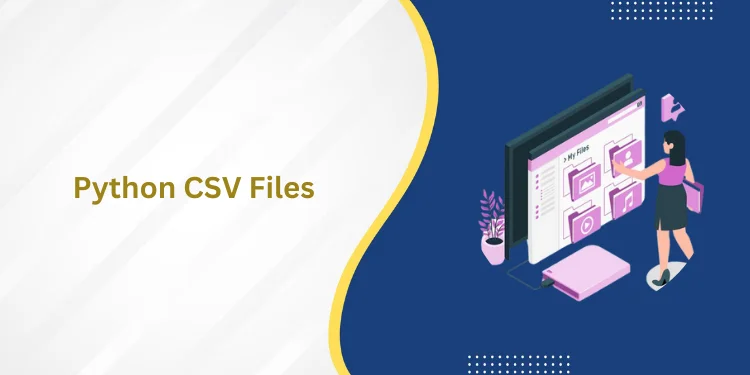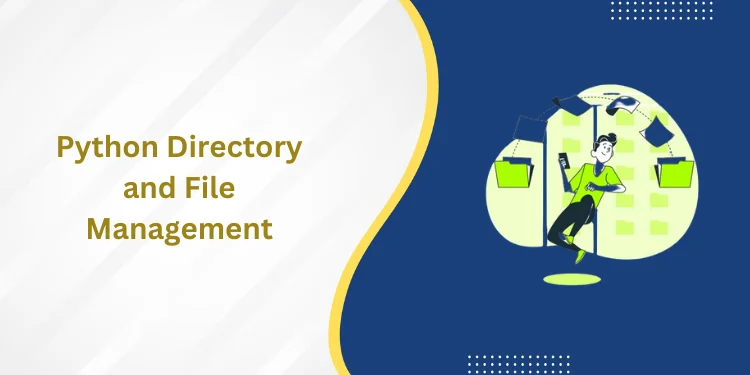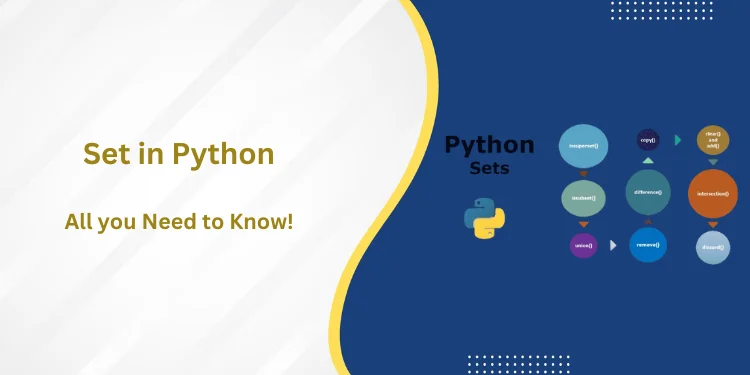Table of Contents
ToggleIntroduction to Object-Oriented Programming
Object-oriented programming (OOP) is an approach to programming built around objects, which are pieces of data structures that contain both data and instructions for manipulating the data. OOPs, are based on four main concepts: Inheritance, Polymorphism, Abstraction, and Encapsulation. In this blog article, we will discuss each of these concepts of the 4 pillars of Oops in detail and explore the features and benefits of OOPs in program design.
Inheritance is a key concept of the 4 pillars of Oops, which allows a class to use the fields and methods of another class by extending it. Inheritance makes it possible to reuse code written for one class in another with similar properties, minimizing redundant code and speeding up development time.
Polymorphism is another fundamental concept of the 4 pillars of Oops, which allows objects of different classes to have different behaviors when sent the same message. There are two types of polymorphism: dynamic binding and compile time polymorphism. Based on the runtime context, dynamic binding occurs when an object changes its behavior. In contrast, Compile time polymorphism occurs at compile time where method overloading or overriding can be used based on their signature.
Abstraction of the 4 pillars of Oops reduces complexity by allowing us to work with only the important details necessary for a particular task without worrying about the underlying implementation details. Abstraction simplifies programming by separating the details from each other so they can be manipulated more easily.
The 4 Pillars of OOPs
Object-oriented programming (OOP) is a powerful programming paradigm that uses the concept of models to help developers create complex software systems. At its core, OOP is based on 4 pillars of Oops that provide the core structure and functionality. These four pillars are inheritance, polymorphism, abstraction, and encapsulation.
Inheritance is the cornerstone of the 4 pillars of Oops and allows for code reuse by taking advantage of the existing functionality in parent classes. This means a child class can “inherit” the attributes and methods from its parent class, allowing for easier development and maintenance. Additionally, inheritance allows for code reusability by basing new classes off existing ones.
Polymorphism is another of the important 4 pillars of Oops that allows different objects to take on different forms depending on their context. There are two main types of polymorphism: static and dynamic. Static polymorphism occurs when an object takes on a form based on its data type at compile time, while dynamic polymorphism occurs when an object takes on a form based on its runtime environment.
Abstraction of the 4 pillars of Oops is essential to OOP as it helps developers reduce complexity and keep the details separate from the interface-level features. Abstraction makes it possible for developers to focus only on what’s important at a particular level of development, meaning that they can work with higher abstractions without worrying about how those abstractions are created or implemented at lower levels in code.
Finally, encapsulation is also a key feature in the 4 pillars of Oops. It allows developers to group related data together into one unit or “package,” making managing complex systems easier.
Interested in data science colleges in pune Have a look
Inheritance

Inheritance is one of the 4 pillars of Oops, along with polymorphism, abstraction, and encapsulation. Inheritance allows us to create hierarchical classes, where each class inherits the features of its parent class, giving it access to its methods and properties. For example, a car can be considered a subclass object of the vehicle object as it has all the features of a vehicle but also has some additional features that are unique to cars.
Polymorphism in OOP refers to the ability of different objects to respond differently, even when exposed to the same message from another object or method. Polymorphism can be divided into two types: static and dynamic polymorphism. Static polymorphism is when different objects are expected to produce similar output based on their methods. In contrast, dynamic polymorphism occurs when an object can take on multiple forms depending on its data type and input.
Abstraction in the 4 pillars of Oops involves hiding unnecessary details from users, such as method implementations and variables used, allowing users to focus on only what’s important about the object being used. The objective here is to reduce complexity, improve readability and maintainability, and speed up development time without compromising functionality.
Encapsulation in the 4 pillars of Oops is a feature that binds together code and data it manipulates; this enables developers to protect data from accidental corruption by exterior functions or sections of code, keeping them safe within defined boundaries set by the programmer themselves. Encapsulation also reduces system complexity making it more robust with easier maintenance.
All these pillars, inheritance, polymorphism, abstraction, and encapsulation, work together for OOPs programming language to provide powerful solutions for most software projects.
Want to become Data Scientist? Visit data science course in gurgaon
Polymorphism

Polymorphism is one of the 4 pillars of Oops, along with inheritance, abstraction, and encapsulation. Understanding polymorphism can be key to understanding how an object-oriented programming language works.
Polymorphism allows for code to be used for multiple objects or scenarios. This means that a single set of code can produce different results depending on the type of object it is used with. This makes it easier to scale up projects as there is less repeating code, and coding becomes more efficient.
Inheritance and polymorphism are closely linked in object-oriented programming languages. Inheritance allows classes to take on properties from other classes meaning that a single line of code can access multiple class definitions. This inheritance also creates a new class each time which then can be manipulated by polymorphism as each new class will have its unique methods and attributes.
Types of Polymorphism: Overloading
Overloading is when a class has two or more methods with the same name but different parameters. This type of polymorphism allows you to use the same process but apply it differently depending on the parameter passed into the method, producing a different outcome each time when called upon in a program.
By learning about polymorphism, you will have an improved understanding of how object-oriented programming languages work and how they can benefit development times and project scalability using fewer lines of code, making them more efficient overall.
Abstraction

Object-oriented programming (OOP) of the 4 pillars of Oops is a critical tool in modern soft
ware development and abstraction. Learning the abstraction principles and how they can be applied to OOP will help you write more powerful and efficient code.
In this article, we’ll explore the concept of abstraction of 4 pillars of Oops, including inheritance and polymorphism — two concepts that are closely tied to abstraction — as well as encapsulation features, real-world applications, and the many benefits of using OOP.
Inheritance is a key feature of the 4 pillars of Oops and allows us to create classes (i.e., objects) with similar traits or behaviors. For example, if you have a class for an Apple and another for an Orange, you can use inheritance to build a parent class, “Fruit,” with the shared traits or behaviors between them. We then create subclasses such as Apple and Orange that inherit those traits from Fruit.
Another important concept related to inheritance is polymorphism, which refers to having multiple classes implement the same operation or method but produce different results when called upon. There are two types of polymorphism: static (also known as compile time) and dynamic (run time). Static polymorphism occurs when methods are declared in a base class but defined in child classes; dynamic polymorphism occurs when overriding a method by creating one with the same name in a subclass.
Abstraction principles are essential for software engineering because it helps reveal essential characteristics of objects without exposing their internal details.
Related Posts: four pillars of Oops
Encapsulation

Encapsulation is one of the 4 pillars of Oops, along with Inheritance, Polymorphism, and Abstraction. The concept of encapsulation involves “wrapping” data and behavior together within a class, allowing control over how that data can be accessed and used. There are several benefits to encapsulating data and behavior in OOP that you should consider when creating your software applications.
Definition: Encapsulation of the 4 pillars of Oops refers to the concept of wrapping up related data and behavior into a single unit called a class. This allowed for improved code organization and increased reusability and maintainability by making it easier to identify and modify the behavior and data associated with a particular class.
Benefits: Encapsulating data and behavior in OOP provides many benefits that include increased security, better code organization, improved manageability, and less risk of errors due to changes in one component affecting other components. For example, suppose you need to change a particular component within your application. In that case, encapsulation can reduce the risk of these changes having an unintended effect on other parts of the application because everything related to that component can be found in one place with clearly defined access levels for all users.
Implementation: When implementing encapsulation in OOP, there are several considerations you will want to take into account. First, it is important to determine which components need to be encapsulated by looking at how related pieces of data must interact with each other and how various operations within your application are performed.
Also visit: Merge sort in c
Implementing the Core Concepts of The 4 Pillars of Oops for Successful Software Development
Object-oriented programming (OOP) is crucial for successful software development, and the four pillars of Oops are essential to its implementation. These four core concepts – inheritance, polymorphism, abstraction, and encapsulation – provide structure and functionality to software development. Let’s take a look at how each pillar can be used to create successful software projects.
Inheritance is the ability of a class or object to acquire properties from a parent object. In other words, it allows for “inheriting” the characteristics of an existing class or object. This helps reduce code duplication by giving objects access to already existing properties from their parent.
Polymorphism is another important concept of OOP that refers to the ability of different objects and classes to have similar behaviors without identical implementations. Types of polymorphism can include compile time polymorphism (uses overloading) and runtime polymorphism (uses overriding).
Abstractions help keep your code organized by allowing developers to remove unnecessary details and focus on the overall design goals. It’s important that abstraction involves representing essential features without being too specific about implementation details so that objects can be reused in different contexts.
Encapsulation is an important concept in OOP because it prevents access to internal details, thus preventing information from being leaked out of the system. It also makes code much easier to maintain since you don’t need to worry about how something works internally to use it; you use the interface provided by encapsulation instead.
Frequently Asked Questions
What is the difference between polymorphism vs inheritance?
Polymorphism and Inheritance are two of the 4 pillars of Oops. The other two pillars are encapsulation and abstraction.
Polymorphism is the ability for an object to exist in multiple forms or “shapes” throughout a program. This allows similar objects to share functionality across different classes using a common interface and methods that contain similar logic. Using polymorphism, developers can reuse code more efficiently and easily extend existing programs to include new classes with unique properties.
Inheritance is the process by which an object acquires the properties and behaviors of its parent class while maintaining its uniqueness. Inheritance promotes code reusability, allowing developers to create derivatives from previously created models, thereby reducing development time significantly. Through inheritance, one class can access all members (including private variables) of another class within itself as if it were declaring them directly within its scope.
4 pillars of Oops provide primary benefits: data hiding or encapsulation; inheritance; polymorphism; and abstraction. Encapsulation allows developers to control how data is accessed inside a program by restricting visibility through private variables and methods only available internally at run-time or compile-time respectively.
Inheritance allows developers to quickly create specialized objects without having to recreate large amounts of code used in previously created general models for specific purposes, such as creating UI components like buttons or carousels in web applications or games respectively.
Polymorphism allows flexibility when working with different objects that may have common components being used across different classes but needing specialized behavior depending on what context they are used in at run-time, such as loading images differently based on file format detected dynamically instead of hard coding each line preceding this statement specifying parameterization always varied instead just once per file type related therewith likewise around information so revealed may be applied easily next relevant action taken therefrom whose results kept
What are the types of OOPs?
Object-Oriented Programming (OOP) is a programming paradigm that revolves around objects rather than functions and logic. The 4 pillars of Oops are abstraction, encapsulation, inheritance, and polymorphism.
Abstraction: Abstraction in the 4 pillars of Oops is the process of hiding details from the user to simplify a program’s design. This allows it to model real-world problems or concepts more accurately. For example, an abstract class called “vehicle” would contain properties such as engine size and color but not include details about how these are implemented in any particular type of vehicle.
Encapsulation: Encapsulation in the 4 pillars of Oops is the process of wrapping up data and code into one unit or an “object.” Objects group related variables together with their associated behavior to handle them as a single entity. In this way, data security is maintained since all calls to access its fields must go through defined methods instead of directly accessing them from outside sources like other classes or functions.
Moreover, by grouping related variables together with their associated behavior, data integrity can be better enforced since validation rules governing that specific set of variables become easier to enforce on every call they receive without having to spread them throughout multiple locations within the codebase, making them more prone to errors resulting from logic mistakes made while implementing them elsewhere in the development process.
Inheritance: Inheritance in the 4 pillars of Oops allows for specialized versions of objects that have common characteristics but also demonstrate additional unique traits specific only to themselves as defined by their parent class, thus allowing for greater levels of flexibility when creating new objects based upon existing ones reducing overall development times for projects where this feature proves beneficial due its ability reusability capabilities by using code written once and utilizing it multiple times accordingly granting reuse efficiency derived gains when compared against writing duplicate sections over again while attempting to satisfy requirements derived from those same areas within a given software solution being created.
Polymorphism: Polymorphism in the 4 pillars of Oops enables developers to create software solutions quickly while ensuring flexibility
What are the 4 main functions of an Oops?
The four main functions of Object-Oriented Programming (OOP) are Encapsulation, Abstraction, Inheritance, and Polymorphism.
Encapsulation is the process of combining data and functions into a single unit called an “object.” The data and functions are kept private within the object, preventing any other program part from directly accessing or modifying them.
Abstraction: This concept allows complex problems to be broken down into more manageable parts using classes and objects. With abstraction, you can focus on only the details relevant to your current task without getting overwhelmed by those that aren’t applicable.
Inheritance: OOP languages support inheritance, allowing code reusability across multiple classes and objects. Using inheritance, parents can pass down their properties to their children so that they do not have to write all the code again each time a new class/object is created.
Polymorphism refers to the ability of different classes or objects in a program to respond differently when presented with identical messages or function calls. We achieve polymorphism through method overriding, where an inherited class redefines methods defined in its parent class(es).
What are the 4 categories of functions?
The four categories of functions are called the 4 pillars of Oops. These include encapsulation, abstraction, inheritance, and polymorphism.
Encapsulation is the process of wrapping data and associated methods into a single unit or object to control access. It allows for data hiding so that internal details are hidden from users. This creates a secure environment where software systems can be built with added safety features such as permission levels and private information storage.
Abstraction of the 4 pillars of Oops is the process of dealing with only relevant details while ignoring irrelevant ones. This can help simplify complex systems by filtering out unnecessary parts and making them easier to understand and work with. Examples of abstraction include classes, interfaces, events, messages, and nodes/threads.
Inheritance establishes relationships between objects or classes where one contains some or all characteristics found in another class. This allows developers to create new objects while reusing existing code, saving time and effort when coding programs.
In addition, it provides greater flexibility over how data structures are designed within an application since lower-level elements can inherit traits from higher-level ones without having to be rewritten each time a new structure arises during development cycles.
Polymorphism describes an ability for different types of objects with different behaviors but similar makeup, such as member variables or methods being declared the same name but behaving differently depending on the type. An example would be two types of animals sharing common attributes like weight or color but producing different sounds based on their species type (cat meowing vs. dog barking).
What is encapsulation vs abstraction?
Encapsulation and abstraction are two of the 4 pillars of Oops. The other two pillars are inheritance and polymorphism.
Encapsulation of the 4 pillars of Oops refers to the practice of containing all or some of an object’s data within its class. This creates a barrier between how an object deals with its variables and functions and how external classes interact. It allows developers to protect their code from other parts of the program that may cause undesirable behavior or side effects.
Abstraction of the 4 pillars of Oops refers to taking away internal complexities to reduce complexity when interacting externally. It involves exposing only essential details while hiding away background processes from users’ view. This helps keep programs more lightweight, maintainable, modular, and easier for others to understand without having to go through investigations into each class’s implementation code for a particular feature.
The purpose of the 4 pillars of Oopsis to break down large problems into shorter computation pathways so that multiple agents can work together quickly on solving tasks in a parallel computing environment efficiently using all 4 pillars of Oops: encapsulation, abstraction, inheritance, and polyphenism. Encapsulation codes data together with functionality and reduces complexity by providing abstracted interfaces that can be controlled more easily. Abstraction of the 4 pillars of Oops helps create reusable software modules which hide internal details, making it simple yet robust enough for different purposes, eliminating redundancies while leveraging modularity eases debugging & improves readability, thus allowing faster development cycles overall.
Inheritance of the 4 pillars of Oops enables reusing base code blocks & increases scalability by offering extension points where customized versions can be created, thus reducing overheads & risk scalability changes drastically affect the whole system’s stability & performance level during run-time operations, consequently leading towards greater efficiency scores eventually obtained at end-user levels consequentially! Finally, Polymorphism again performs many forms & types by making itself interchangeable amongst various activities so that the same module could be used across multiple platforms based upon complimenting strategies modified accordingly and closely followed along.













